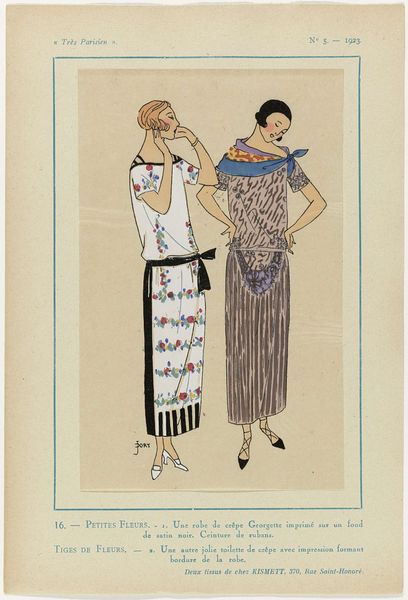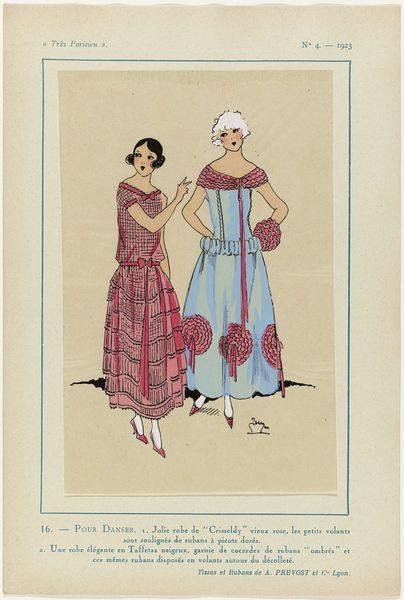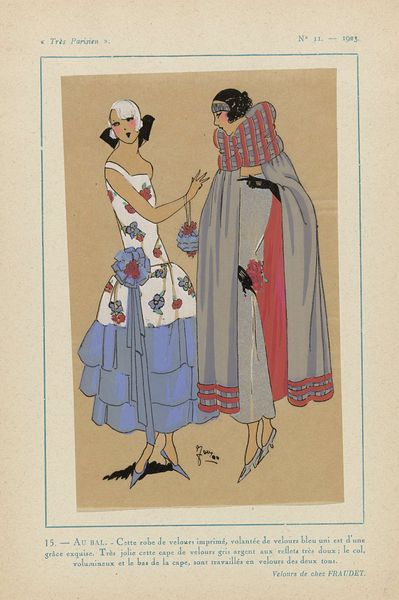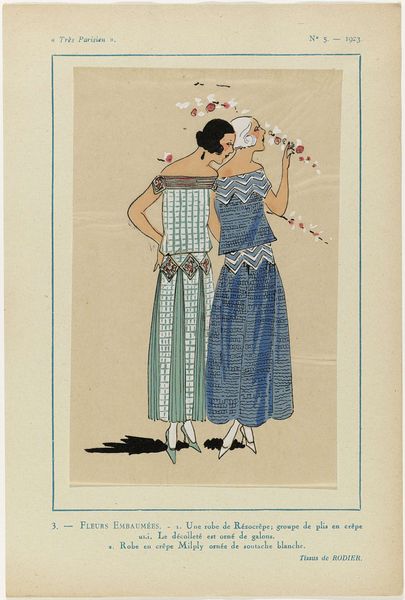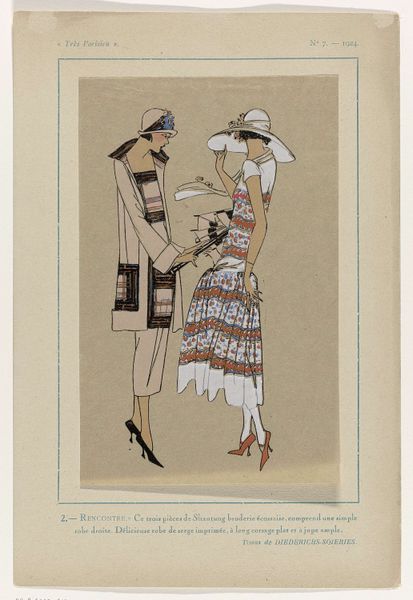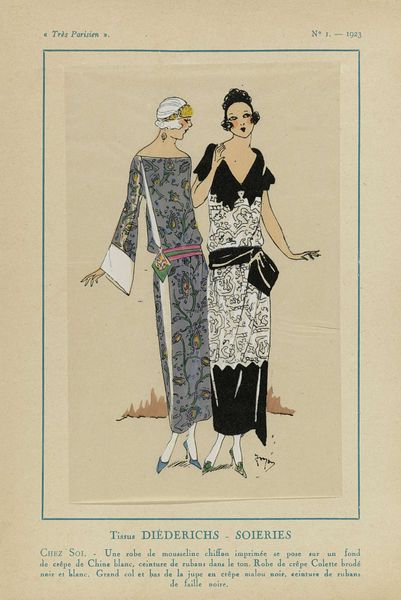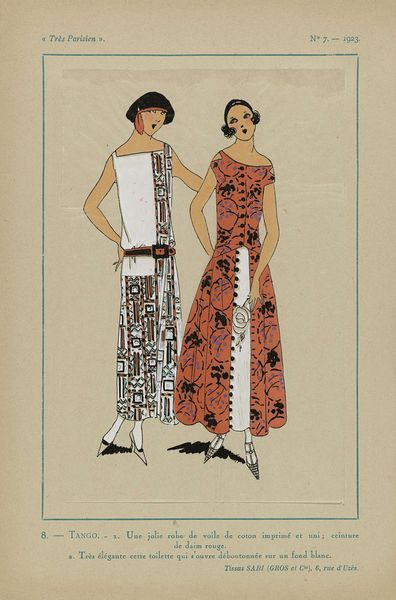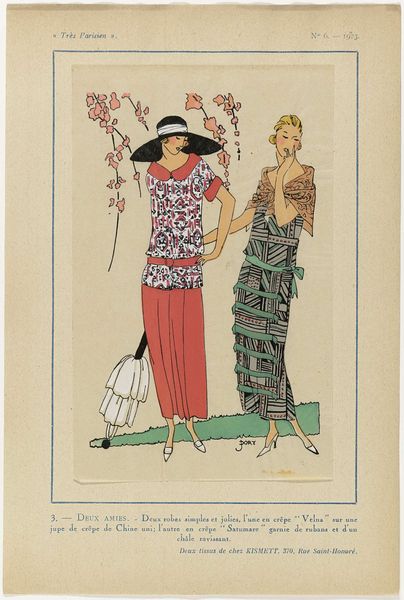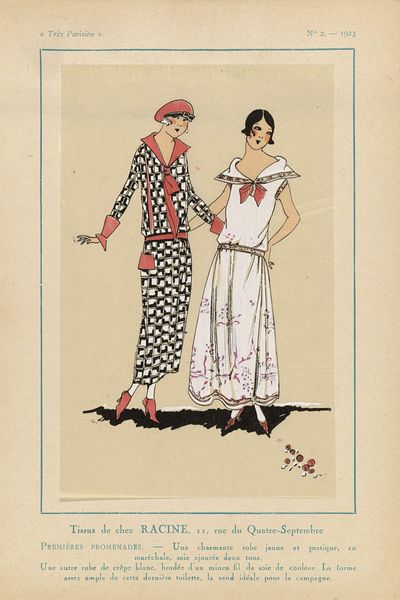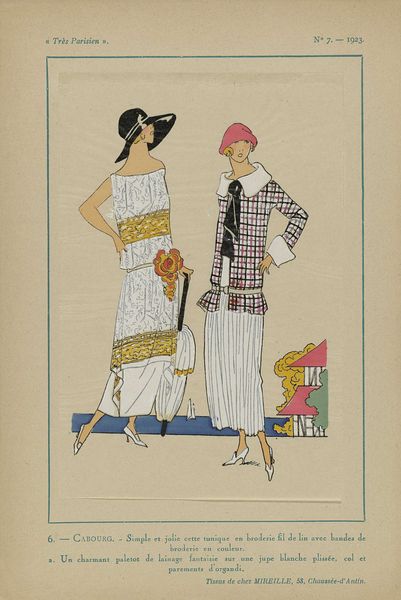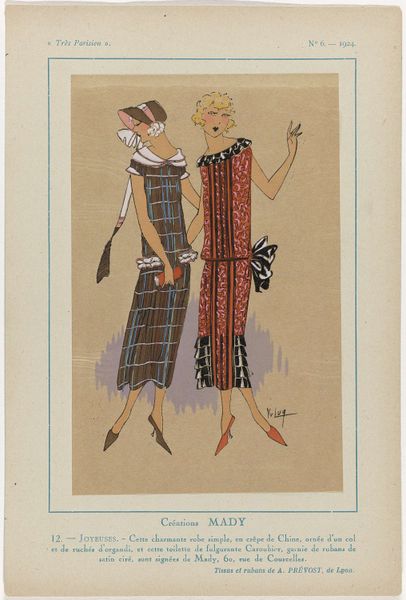
Très Parisien, 1923, No 6: 11.-SOEURETTE. - 1. Robe en Crisseldy blanc... 1923
0:00
0:00
anonymous
Rijksmuseum
Dimensions: height 269 mm, width 180 mm
Copyright: Rijks Museum: Open Domain
Curator: Our focus today is a piece from 1923 titled "Très Parisien, 1923, No 6: 11.-SOEURETTE. - 1. Robe en Crisseldy blanc...". It’s a drawing held at the Rijksmuseum and thought to be by an anonymous artist. Editor: It’s deceptively simple. At first glance, I see just stylized figures, but the lines... they’re confident, almost arrogant. There is something rigid but graceful in the arrangement of forms, I can not lie. Curator: Indeed. The work exemplifies Art Nouveau. Observe the economy of line, the color palette—whites and reds set against a background which feels quite flat. How might these elements function together in the overall scheme of the image? Editor: Well, fashion drawings like this are essentially modern day status updates for its intended audience. Both the dresses embody two different expressions and aspects of Parisienne fashion from the same era. You have the simple youthful robe worn by the girl next to a mature yet stylized dress with what appears to be repeated tulip symbols printed throughout. Curator: Fascinating! You read them as tulip symbols. What significance might these flowers hold for a Parisian audience of the 1920s? I see teardrop motifs and hearts myself. Editor: Perhaps both interpretations hold validity. These may have represented not merely beauty but a symbolic opening, the beginning of a more uninhibited way for modern women of that time to explore what modern life had to offer. They even printed an interpretation on the side of the illustration's text too. The almond green crepe underneath it, very vibrant. Curator: Very astute of you! Now notice the textural effect of the medium itself: what kind of statements does it make for itself? Editor: I noticed they worked with many layers, as watercolor tends to lend itself nicely to create subtle contrasts. In particular, the shadows around their feet really make their existence stand out more as flat, real elements that contrast each other on canvas. The girls give way to different levels of reality here. Curator: That’s wonderfully observed. It’s so easy to get lost in the detail, one forgets to admire their technical quality, yes. Editor: Overall, an eloquent testimony to the enduring dialogue between culture, attire, and emotion conveyed using images from the Jazz Age. Curator: A fittingly concise yet broad response, ending in an embrace that encompasses more perspectives and visual clues to analyze. Thank you for shining an illuminating light on this piece with me today.
Comments
No comments
Be the first to comment and join the conversation on the ultimate creative platform.

